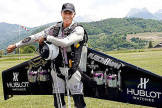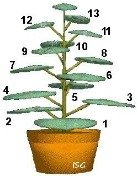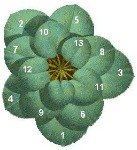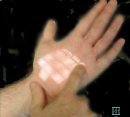Today In History
October 29
1618: Sir Walter Raleigh is executed. After the death of Queen Elizabeth, Raleigh’s enemies spread rumors that he was opposed the accession of King James.
1784: Mozart’s opera Don Giovanni opens in Prague.
1814: The Demologos, the first steam-powered warship, launched in New York City.
1901: Leon Czolgosz is electrocuted for the assassination of US President William McKinley. Czolgosz, an anarchist, shot McKinley on September 6 during a public reception at the Temple of Music in Buffalo, N.Y. Despite early hopes of recovery, McKinley died September 14, in Buffalo, NY.
1927: Russian archaeologist Peter Kozloff apparently uncovers the tomb of Genghis Khan in the Gobi Desert, a claim still in dispute.
1929: Black Tuesday–the most catastrophic day in stock market history, the herald of the Great Depression. 16 million shares were sold at declining prices. By mid-November $30 billion of the $80 billion worth of stocks listed in September will have been wiped out.
1945: The first ball-point pen goes is sold by Gimbell’s department store in New York for a price of $12.
1949: Alonzo G. Moron of the Virgin Islands becomes the first African-American president of Hampton Institute, Hampton,
Virginia.
1952: French forces launch Operation Lorraine against Viet Minh supply bases in Indochina.
1964: Thieves steal a jewel collection–including the world’s largest sapphire, the 565-carat "Star of India," and the 100-carat DeLong ruby–from the Museum of Natural History in New York. The thieves were caught and most of the jewels recovered.
1969: The U.S. Supreme Court orders immediate desegregation, superseding the previous "with all deliberate speed" ruling.
1969: First computer-to-computer link; the link is accomplished through ARPANET, forerunner of the Internet.
1972: Palestinian guerrillas kill an airport employee and hijack a plane, carrying 27 passengers, to Cuba. They force West Germany to release 3 terrorists who were involved in the Munich Massacre.
1983: More than 500,000 people protest in The Hague, The Netherlands, against cruise missiles.
1986: The last stretch of Britain’s M25 motorway opens.
1998: South Africa’s Truth and Reconciliation Commission reports condemns both sides on the Apartheid issue for committing atrocities.
1998: John Glenn, at age 77, becomes the oldest person to go into outer space. He is part of the crew of Space Shuttle Discovery, STS-95.
1998: The deadliest Atlantic hurricane on record up to that time, Hurricane Mitch, makes landfall in Honduras (in 2005 Hurricane Wilma surpassed it); nearly 11,000 people died and approximately the same number were missing.
2004: For the first time, Osama bin Laden admits direct responsibility for the Sept. 11, 2001, terrorist attacks in the US; his comments are part of a video broadcast by the Al Jazeera network.
2008: Delta and Northwest airlines merge, forming the world’s largest airline.
2012: Hurricane Sandy devastates much of the East Coast of the US; nearly 300 die directly or indirectly from the storm.
Born on October 29
1882: Jean Giraudoux, French dramatist, novelist and diplomat, famous for his book Tiger at the Gates.
1891: Fanny Brice, comedian, singer and actress.
1897: Joseph G. Göbbels, German Nazi Propaganda Minister who committed suicide in Hitler’s bunker.
1905: Henry Green, novelist (Living, Party Going).
1910: A. J. Ayer, English philosopher.
1921: Bill Maudlin, American cartoonist whose GI characters "Willie" and "Joe" appeared in Stars and Stripes newspapers during World War II.
1938: Ralph Bakshi, Palestinian-American director of live films and animated full-length films for adults including 1972’s Fritz the Cat (first animated film to be rated X by the Motion Picture Association of America), Wizards (1977) and The Lord of the Rings (1978).
1943: Don Simpson, film producer, screenwriter, actor; (co-producer Flashdance, 1985; Top Gun, 1986).
1945: Melba Moore, disco and R&B singer, actress ("You Stepped into My Life," "Lean on Me").
1946: Peter Green, guitarist, songwriter, founder of the band Fleetwood Mac; regarded as one of the greatest guitarists of all time.
1947: Richard Dreyfuss, actor (American Graffiti, Jaws; won Academy Award for Best Actor for 1977’s The Goodbye Girl).
1948: Kate Jackson, actress, director, producer (original Charlie’s Angels TV series, Scarecrow and Mrs. King TV series).
1954: Lee Child, author; creator of the Jack Reacher novel series.
1958: David Remnick, journals, author, magazine editor (The New Yorker); won Pulitzer Prize for Lenin’s Tomb: The Last Days of the Soviet Empire (1994).
1971: Winona Ryder, actress, producer (Beetlejuice; Girl, Interrupted).






